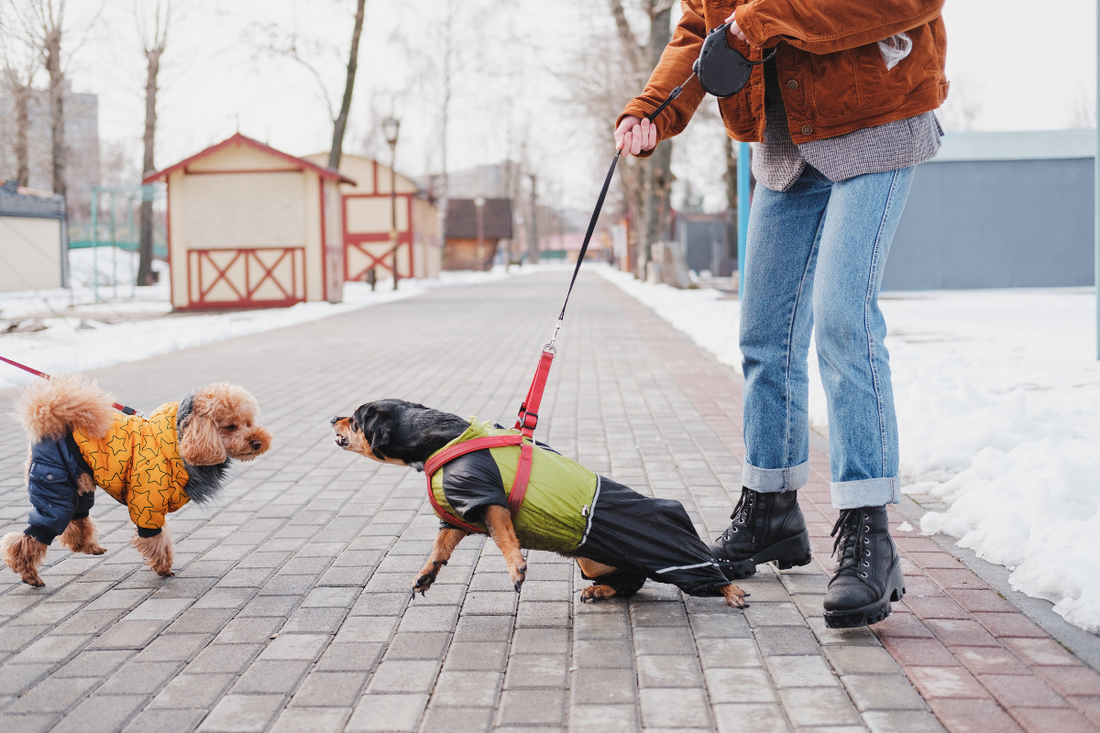Understanding and Handling Fear Aggression in Dogs

When people hear a dog is “aggressive,” they often think it means the dog is bad. But that’s not true at all. An aggressive dog might just be misunderstood, need more space, or have experienced trauma that affects how they react to things they see as threats.
What Causes Fear Aggression in Dogs?

Fear is one of the main reasons dogs show aggressive behavior like growling, barking, lunging, showing teeth, snapping, or even biting. Fear is a reaction to something that scares them, whether it’s a person, another dog, an object, or a situation. Dogs don’t always know the difference between a real threat and something they just think is a threat—they react to both.
Fear aggression happens when a dog wants to put more distance between themselves and whatever is scaring them. They’re essentially saying, "Stay away from me!" If their plea for space is ignored, they can feel trapped and might escalate their behavior.
Dogs with fear-based aggression might be defensive, only reacting when approached, or offensive, moving toward the trigger aggressively because of past experiences or lack of socialization.
Signs of Fear Aggression in Dogs

Here are some signs your dog might be dealing with fear aggression:
- Ears turned to the side or pinned back
- Lip licking
- Panting
- Pacing
- Body trembling
- Direct eye contact or “whale eyes” (showing the whites of their eyes)
- Hair standing up (piloerection)
- Avoiding people or other animals
- Whining, barking, or growling
If these initial signs are ignored, your dog might escalate to more obvious behaviors like jumping, lunging, or biting. After repeated exposure to fear-inducing situations, a dog’s behavior can quickly escalate to aggression without much warning.
Why Do Dogs Develop Fear Aggression?

There are several reasons why dogs might develop fear aggression:
- Lack of Socialization: Dogs that didn’t get socialized properly as puppies might react fearfully to new experiences.
- Traumatic Experiences: Early traumatic experiences can lead to fear-based aggression.
- Punishment: Harsh punishment, like leash tugging with a choke or prong collar, can make a dog more likely to respond fearfully.
- Genetic Factors: Some dogs are genetically predisposed to fear aggression.
Common triggers include:
- Strangers reaching toward their head
- Direct eye contact from another dog or person
- Nail trims, ear cleaning, bathing, or shaving
- Being approached or petted while lying down
- Being hugged or restrained by a stranger
- Needle injections
- Touching sensitive areas like their tail, paws, or belly
How to Manage Fear Aggression in Dogs
Here are steps to help manage fear aggression in dogs:

Redirect Their Attention
If your dog starts showing aggressive behavior, get them away from the situation or remove the trigger. If you’re the trigger, step out of sight. Distract your dog by asking them to do something else, like “look,” “touch,” or “find it,” and reward them with treats and praise.
Avoid Punishment
Punishing your dog for aggressive behavior doesn’t work and can make things worse. Instead, use positive reinforcement. Rewarding good behavior builds your dog’s confidence and strengthens your bond.
Try Calming Products
Pheromone sprays can help reduce anxiety, but they won’t solve aggressive behavior on their own. Behavioral medications might help when used with a behavior modification program. Talk to your vet about the best options for your dog.

Use A No-Pull Harness
It offers comfort and control, making walks more enjoyable for you and your dog. Its secure fit reduces pulling, helping you manage your dog better, which can improve their training and behavior.
Get Professional Help
If your dog shows signs of fear or aggression, consult a veterinary behaviorist, certified animal behaviorist, or certified trainer. They can provide strategies to manage your dog around triggers and recommend training and behavior modification exercises to reduce fear and increase confidence.
Preventing Fear Aggression in Dogs
Prevention is better that dealing with all this aggression when your dog grows up so here's what you can do early on:

Socialize Early: Take your puppy to socialization classes between eight and 16 weeks old.
Monitor Interactions: Supervise your dog’s interactions with people, kids, and other animals to ensure they don’t become fearful or overwhelmed.
Use Positive Reinforcement: Carry high-value treats to create positive associations with new stimuli. Avoid punitive techniques and teasing behaviors that might trigger aggression.
Be Gentle and Consistent: Treat your dog with kindness, patience, and consistency. Reinforce good behavior with praise and rewards.
By understanding and addressing fear aggression, you can help your dog feel safer and more confident, making life better for both of you.
-----
This is just a sampling of informational roundups we offer at Joyride Harness. You can find more tips and tricks and how-to’s for caring for your dog on our blog at this section. Feel free to leave a comment with things you’re looking for!
Source: PetMd





















